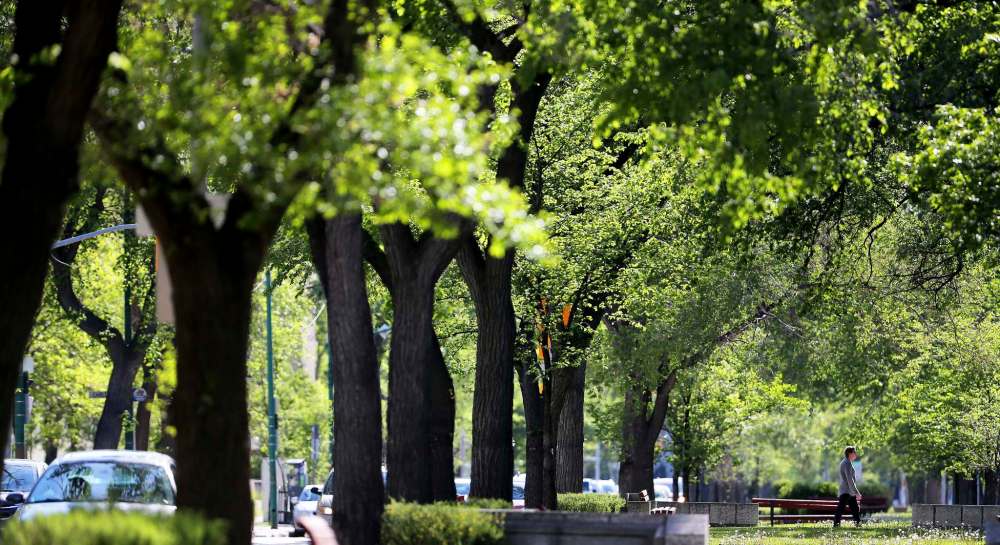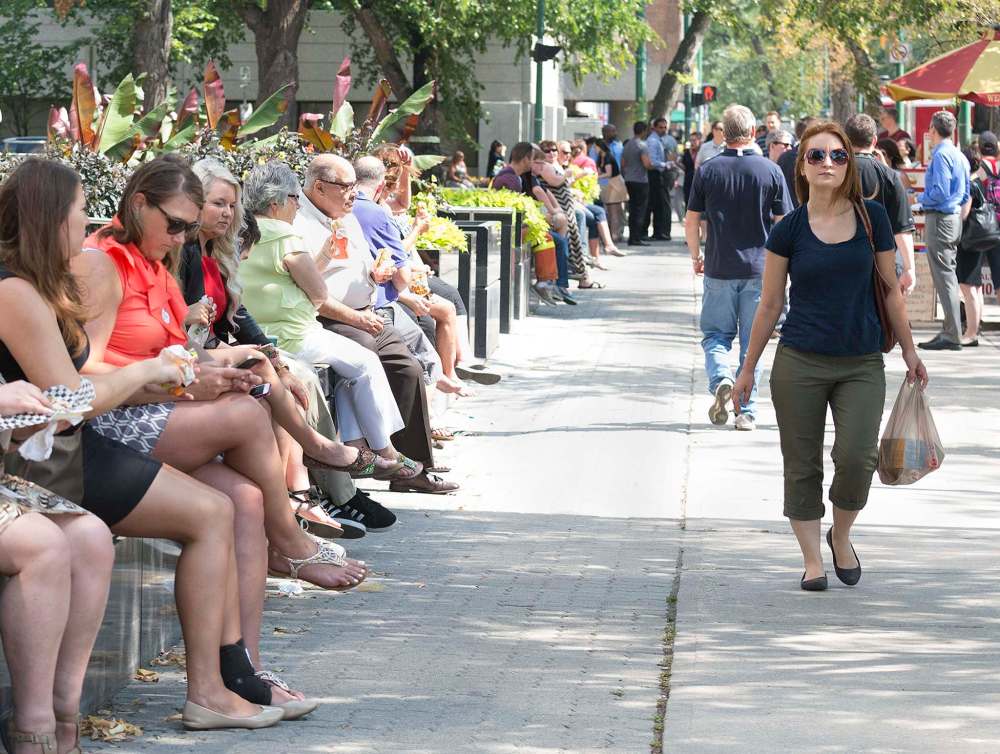Broadway offers essential lessons
Advertisement
Read this article for free:
or
Already have an account? Log in here »
To continue reading, please subscribe:
Monthly Digital Subscription
$19 $0 for the first 4 weeks*
- Enjoy unlimited reading on winnipegfreepress.com
- Read the E-Edition, our digital replica newspaper
- Access News Break, our award-winning app
- Play interactive puzzles
*No charge for 4 weeks then billed as $19 every four weeks (new subscribers and qualified returning subscribers only). Cancel anytime.
Read unlimited articles for free today:
or
Already have an account? Log in here »
Hey there, time traveller!
This article was published 26/05/2016 (2891 days ago), so information in it may no longer be current.
On a cool Monday morning in the spring of 1960, 50 mature elm trees lining the downtown stretch of Winnipeg’s Broadway were cut down by city crews. Buried deep in the annual budget, under the general term “street improvements,” the trees fell in order to make room for turning lanes onto both Main Street and Osborne Street.
The move was a surprise to Broadway residents, Winnipeggers in general and, ostensibly, city councillors. Done in secrecy, and with no provision of alternatives, the Free Press charged this was a plot hatched surreptitiously somewhere inside city hall.
It may have been an anticipation of public outcry, three years after the Wolseley Elm standoff, that motivated traffic engineers to keep quiet about the tree-removal plans for Broadway. Whatever the reason, city council quickly moved to halt any further destruction.

This episode came at a nadir of sympathy for the urban fabric of cities and an apex of faith in experts, such as traffic engineers. Planning and development clung to the wistful hope that making it easier to access downtown from the suburbs by car would save downtown. This was largely accepted by citizens as received wisdom.
But there were limits to what Winnipeggers would sacrifice to the gods of easy motoring. Cutting down leafy swaths of Broadway went too far.
In 1960, The Forks was still a smoky railyard sectioned off from the city, while the warehouse district north of Notre Dame Avenue had yet to be appreciated by more than a few architecture students and clothing manufacturers. Broadway was important, and one of downtown’s few unique attractions for citizens and visitors: a kilometre-long outdoor space in the middle of a large prairie city.
First laid out in 1874 by the Hudson’s Bay Company, Broadway spanned the breadth of the company’s large land reserve around Upper Fort Garry. If the wide boulevard was first devised simply as a real estate selling feature, it soon came to have a greater public value. While neon-lit Portage Avenue and Main Street were wide open and vibrant, Broadway was enclosed and verdant.
Broadway’s great public buildings, mansions, apartment blocks, and the Beaux-Arts Union Station that terminated the eastern vista all added to both the boulevard’s sense of enclosure and permanence. Like on historic St. Charles Avenue in New Orleans, streetcar tracks ran down Broadway’s grassy boulevard beneath two rows of trees until the early 1950s.
If Broadway’s treed boulevard was an obstacle to traffic engineers, it was a draw for developers of new office buildings. Beginning in the 1940s, the old mansions slowly made way for Modernist office buildings. This caused a spike in Broadway’s daytime population, but the design of the new buildings lacked suitable commercial spaces for food establishments that could feed them.
In response, food carts and trucks began to set up along the sidewalk, and in recent decades, this has become a constant feature of Broadway at midday whenever the weather is even remotely pleasant. Narrow, plaza-like buffers along the sidewalk edge, another regular feature of the new building’s designs, unintentionally created an abundance of seating. Overtop it all, a gracious tree canopy added visual interest and softened the effects of Winnipeg’s diverse climate.
Today, liberalization of Winnipeg’s food-truck regulations has happily coincided with a burgeoning sophistication in Winnipeggers’ tastes. This adds culinary diversity on Broadway unseen a decade ago. Good old hotdogs can still be found but they are now served among numerous ventures specializing in poutine, falafel, ugali and tacos.

People who visit Broadway for lunch may view it as a respite from city life, but it is actually the full enjoyment of the city. Here, on the southern edge of a downtown neighbourhood easily characterized by surface lots, driveways, blank walls, and spartan street design, Broadway is a place where the human need for beauty, informality, connection and a nice place to sit have not been forgotten.
Challenges exist, such as keeping trees healthy so close to incessant vehicle traffic, and making Broadway a pedestrian destination outside the work week (a few local cafés are doing a great job of this at their respective street corners). But Broadway offers lessons in how streets can organically reinvent themselves. Preserving the framework is essential and, like when the trees fell in 1960, cities don’t always appreciate the good things they have until they are threatened.
Robert Galston is a master’s candidate in the city planning department at the University of Manitoba.
Twitter: @robgalston


